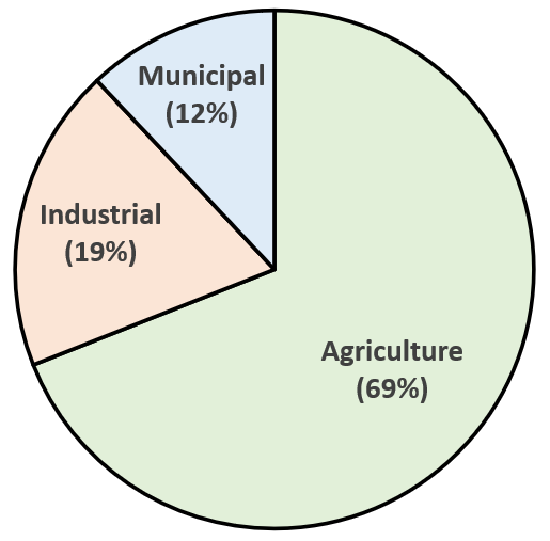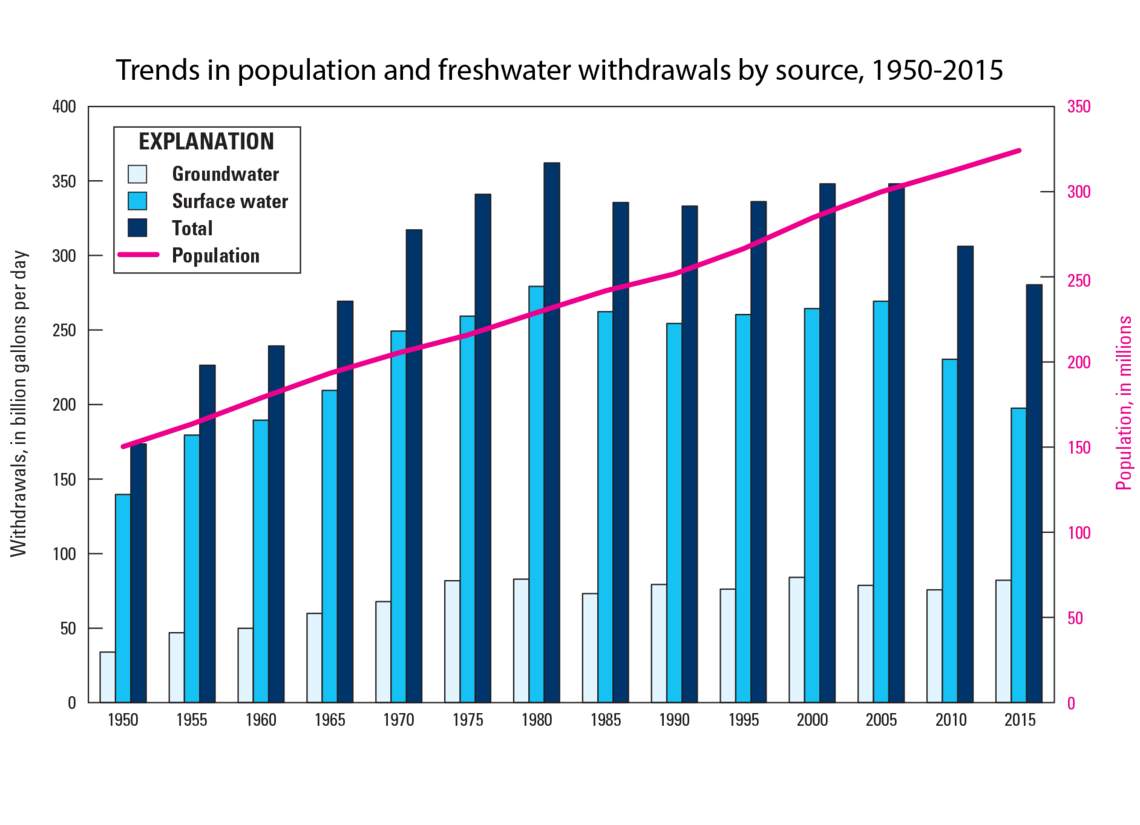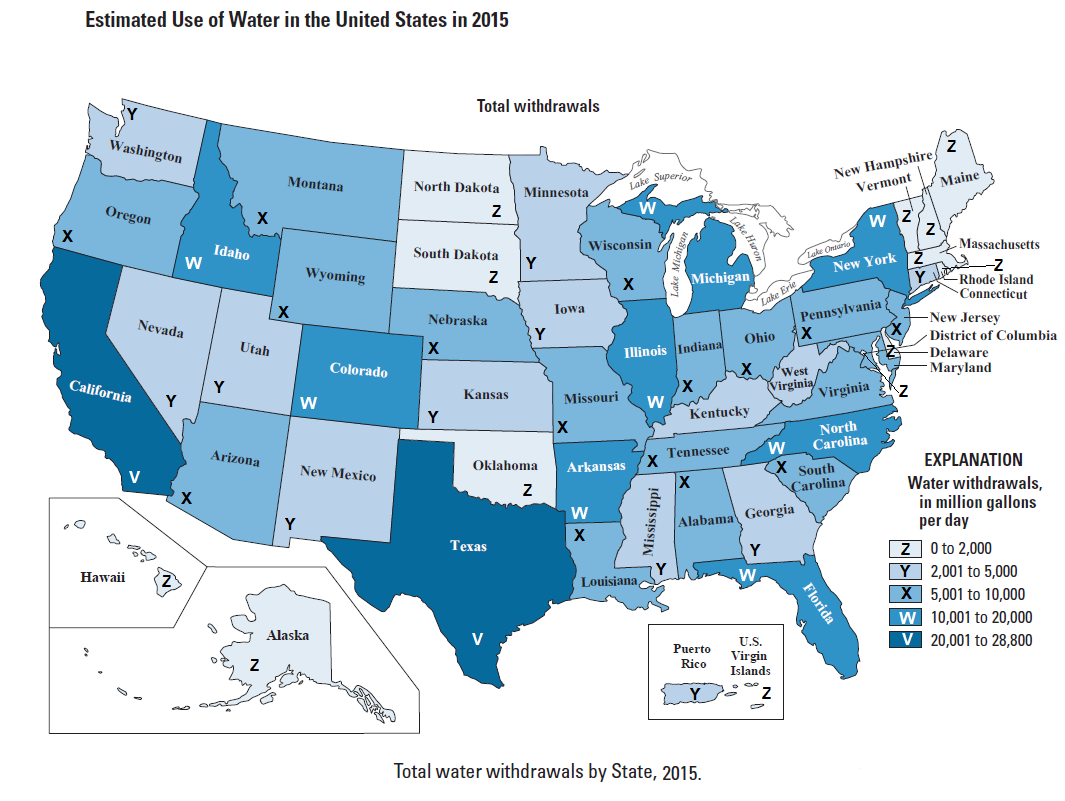13.2: Water Usage
- Page ID
- 32214
Freshwater supply is one of the most important ecosystem services. In 2014, global water consumption was 3999 km3 per year (over 1,000 trillion gallons!). The greatest use of this water is for irrigation in agriculture, but significant quantities of water are also extracted for public and municipal use, as well as industrial applications and power generation (figure \(\PageIndex{a}\)).

Humans require only about 1 gallon per day to survive, but a typical person in a U.S. household uses approximately 80-100 gallons per day, which includes cooking, washing dishes and clothes, flushing the toilet, and bathing. Additionally, we rely on the food, energy, and mineral resources, which all require water to produce. For example, approximately three gallons are needed to produce a tomato, 150 gallons for a loaf of bread, and 1,600 for a pound of beef. (You can learn more about the water footprint of different foods using this interactive website.) Twenty-one gallons are needed to produce one kilowatt-hour (kWh) of electricity from a traditional power plant (about 1 kWh is needed to heat an oven for 30 minutes), and one ton of steel consumes about 63,000 gallons of water. The water demand of an area is a function of the population and other uses of water.
In the United States, 281 billion gallons of water were withdrawn per day in 2015, of which 82 billion gallons are fresh groundwater (figure \(\PageIndex{b}\)). The state of California accounts for 9% of national water withdrawal (figure \(\PageIndex{c}\)).


Attributions
Modified by Melissa Ha from the following sources
- Water Use and Distribution from An Introduction to Geology by Chris Johnson et al. (licensed under CC BY-NC-SA)
- Water Cycle and Fresh Water Supply from Environmental Biology by Matthew R. Fisher (licensed under CC-BY)
- Biogeochemical Cycles and the Flow of Energy in the Earth System from Sustainability: A Comprehensive Foundation by Tom Theis and Jonathan Tomkin, Editors (licensed under CC-BY). Download for free at CNX.


